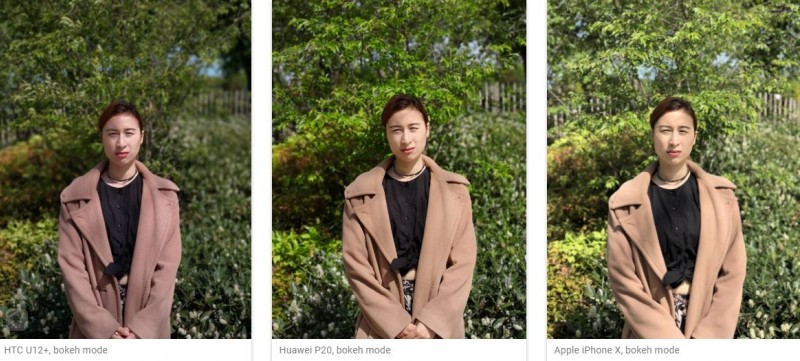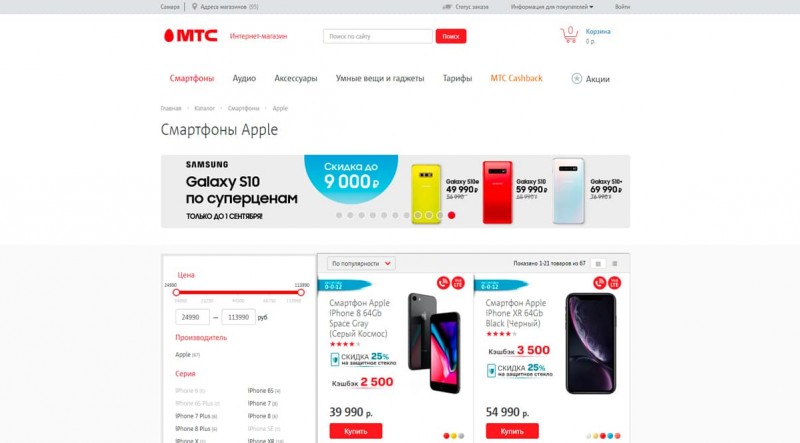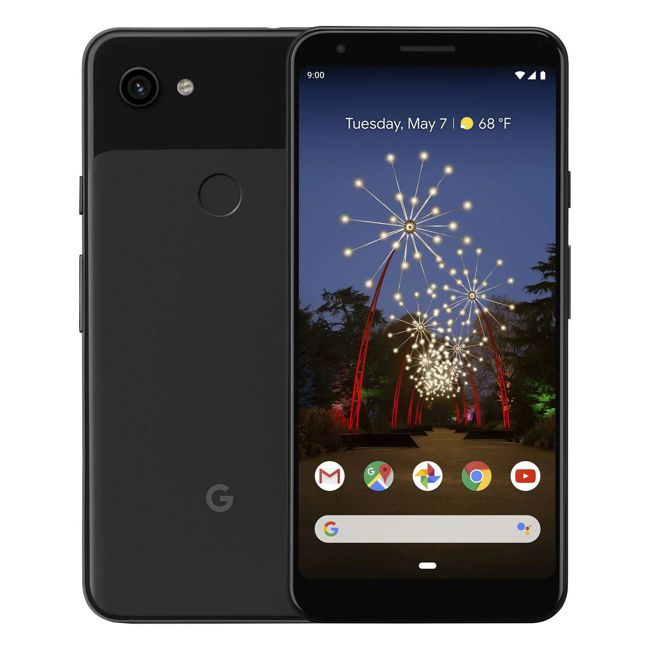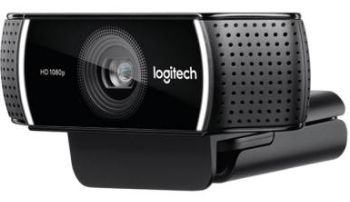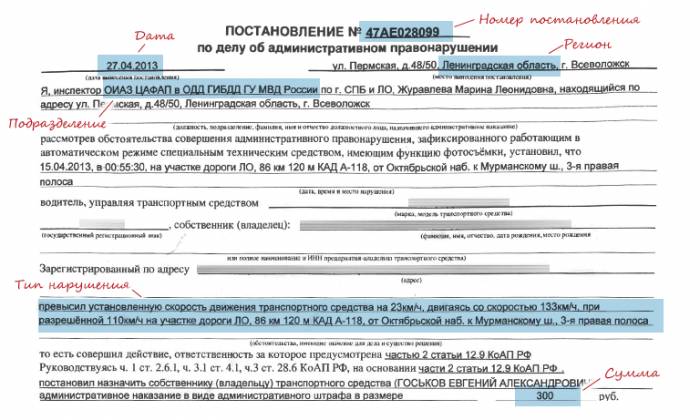Топ смартфонов с лучшей камерой в 2020 году
Содержание:
- Sony Xperia 5
- Какой производитель камерофонов лучше?
- Высший сегмент – ТОПовые камерофоны
- Video scores explained
- Conclusion
- Video scores explained
- Контакты
- Conclusion
- Video scores explained
- Redmi Note 8 Pro
- 8. Huawei Mate 30 Pro
- 3. Honor 20 Pro
- Conclusion
- OnePlus 8 Pro camera review (originally published April 14, 2020)
Sony Xperia 5
Xperia 5 выпустили в крайне интересном и даже перспективном форм-факторе. Устройство с кинематографическим дисплеем 6,1” и соотношением сторон 21:9, на первый взгляд, выглядит странно, но в результате очень комфортно лежит в руке и удобно управляется.
Качество фотосъемки наши эксперты оценили достаточно высоко — на уровне топовых камерофонов. Основная камера у Xperia 5 тройная (12+12+12 Мп). Главный датчик со светосилой f/1,6 и второй объектив с 2-кратным оптическим зумом оснащены оптическим стабилизатором и фазовым автофокусом. Третий объектив — широкоугольный.
Цвета передаются реалистично, со съемкой при недостатке освещения девайс справляется на ура, а итоговые снимки при необходимости дорабатывает процессор Qualcomm Snapdragon 855. Снимки при желании можно сохранять в RAW.
Камера умеет записывать видео в 4K, но только при 30 fps. А для 60 fps придется переключиться в FHD.
Кроме того, у камеры Xperia 5 есть сверхзамедленная съемка, точная ручная настройка параметров, динамическая вибрация при проигрывании видео и автофокусировка по глазам, как у фотоаппаратов линейки Alpha. Кстати, смартфон может выступать как пульт управления этими фотоаппаратами с выводом картинки с камеры на экран.
Какой производитель камерофонов лучше?
Рейтинг компаний построен с учетом трафика, который генерируют выпущенные ими смартфоны в сети:
- Samsung. Южнокорейский техногигант, выпускающий порядка 300 миллионов устройств в год. В ассортименте телефоны любых классов, от бюджетных до флагманов и более дорогих моделей (со сгибающимся экраном). Смартфоны этого бренда в 2020 году генерируют почти треть трафика – 30%;
- Apple. «Купертиновцам» предрекали крах и множество проблем, но это не помешало их устройствам сгенерировать почти 27% трафика в 2020 году. В разгар пандемии цифра поднялась почти до 29% — что еще делать во время карантина, как не серфить в сети. Успех компании закрепила удачная базовая модель iPhone 11;
- Huawei. Один из самых популярных брендов в России, продажи которого составляют 10.39%. Китайская фирма в свое время обогнала Samsung, начав развивать сети 5G по всему миру. Но ее «прижали» и обложили санкциями. Тем не менее, Huawei есть что предложить, и где-то она обогнала конкурентов. Например, в модели P40 сенсор камеры больше, чем у Samsung Galaxy S20 Ultra (важный параметр для качественной съемки);
- Xiaomi. Китайская компания, на которую приходится 8,36% трафика. В списке смартфонов есть флагманы, камерофоны, игровые устройства и бюджетные (целая линейка, причем с неплохими характеристиками). На вторую половину года Ксяоми запланировала выпуск нового фото-флагмана с сенсором на 144 Мп и 12-кратным зумом.
В сети есть статистика аналитической компании StatCounter – это будет полная версия рейтинга производителей.
Мы уже писали про:
Рейтинг самых мощных телефон 2020 года
Высший сегмент – ТОПовые камерофоны
Huawei P40 Pro, Honor 30 Pro+
Huawei P40 Pro
Единственный недостаток – отсутствие поддержки Google, поэтому с установкой приложений могут быть проблемы. Вам придется использовать Huawei App Gallery, а когда там нужных приложений нет (а это норма), нужно искать apk-файл из сети и устанавливать приложение самостоятельно. Ничего сложного в этом, конечно, нет, но это явный косяк, когда речь идет о смартфоне за большие деньги. См. наш обзор Huawei P40 Pro + примеры фото с камеры
Цены на Маркете
Samsung Galaxy S20
Годный корейский флагман, который еще пару недель назад можно было взять за 65-70 тысяч рублей, сейчас цена упала до 55 тысяч, что сразу сделало аппарат конкурентоспособным, в том числе и среди ТОПовых камерофонов.
Телефон действительно хорошо фотографирует – сзади стоит 12 Мп камера со стабилизацией и автофокусом Dual Pixel, но главное – процессор Exynos 990, который выжимает максимум из этого сенсора.
Остальные камеры:
64 Мп телефото модуль, который во многом обеспечивает приближение за счет кропа, но производитель заявляет о 3-кратном гибридном зуме.
12 Мп широкоугольная камера
Фронтальная камера 10 Мп с автофокусом Dual Pixel, что редкость
По части селфи это один из лучших аппаратов на рынке, если это важно. Примеры фото найдете в обзоре Samsung S20.
Ну и в целом смартфон классный:
Шикарный QHD+ экран, который в разрешении FHD+ работает при 120 Гц
Защита от воды, реверсивная беспроводная зарядка, NFC
Минус один – аккумулятор, вернее, прожорливость «железа», экрана и слабая оптимизация энергопотребления, ведь сама по себе батарея большая. По GSMArena телефон продержался всего 9 часов при проигрывании видео и почти 11 часов при веб-серфинге, а это слабые результаты.
Цены на Маркете
Huawei P30 Pro
И хотя аппарат вышел год назад, он все еще в ТОПе по части камер. В отличие от P40 Pro, P40, Honor 30 Pro+, прошлогодний Huawei P30 Pro работает с сервисами Google, поэтому никаких проблем с установкой приложения нет и быть не может, оплата по GPay также проходит.
Характеристики камер:
- 40 Мп основной модуль + стабилизация
- 8 Мп телефото камера с перископической оптикой, которая обеспечивает 5-кратный зум без потери качества. Даже в 2020 году у P30 Pro один из лучших модулей с приближением
- Широкоугольная камера с автофокусом
Железо – отличное – Kirin 980, раскрывающий потенциал флагманской камеры. Плюс, аппарат предлагает защиту от воды, беспроводную и реверсивную зарядку, большую батарею на 4200 мАч и высокую автономность: 20 часов видео или 14:21 ч веб-серфинга.
Цены на Маркете
iPhone 11 Pro или iPhone 11
Кто бы как ни ругал флагманы Apple, но по части съемки и ПО они шикарные. Особенно они себя хорошо проявляют при съемке видео – iPhone 11 и 11 Pro пишут 4K-видео со стабилизацией и при 60 FPS круче всех остальных смартфонов на рынке, ИМХО! Следовательно, есть смысл брать ТОПовый «Айфон», если вы чаше снимаете видео, а не фото.
Технически камера простая – Sony IMX 363 с разрешением 12 Мп (она же стоит на дешевом Redmi 8), но за счет дорогой оптики со стабилизаций и высочайшей вычислительной мощности процессора Apple A13 Bionic, телефон выдает шикарные фотографии. В том числе здесь классный ночной режим DeepFusion, реализованный с помощью нейронного сопроцессора в чипе Apple A13 Bionic. Снимки в оригинальном разрешении ищите в обзоре iPhone 11.
Прочие плюсы:
- Защита от воды
- Крутой OLED-экран с HDR и Dolby Vision в Pro-версии. В обычном iPhone 11 экран IPS с разрешением HD
- Наконец-то высокая автономность
- Полезная Face ID, которая интегрирована в экосистему Apple. То есть, даже оплата по NFC проходит через распознавание лиц, его нет у других производителей
- Поддержка – 5 лет обновлений ПО!
Безусловно, iPhone 11 и 11 Pro – шикарные смартфоны в том числе и по части фото и видео съемки. Причем, качество фото и видео в теории будет расти с очередным обновлением за счет усложнения алгоритма вычислительной фотографии.
Цены на Маркете
Video scores explained
A device’s overall Video score is derived from its performance and results across a range of attributes in the same way as the Photo score. Tested in its 4K/30fps mode, the OnePlus 8 Pro achieved the following scores: Exposure (93), Color (94), Autofocus (94), Texture (77), Noise (79), Artifacts (83), and Stabilization (96). In this section, we take a closer look at the device’s strengths and weakness for video, with some comparisons against its key competitors.
Under benchmark testing in the lab, video target exposures on the OnePlus 8 Pro were very bright. Although videos get close to overexposed under certain simulated lighting conditions between 20 and 1000 lux, they stay just about within our limits for accurate exposure. In our perceptual analysis, we found these bright target exposures combined with high levels of contrast ensured very pleasing results, however, which helped the OnePlus 8 Pro achieve a new top score for video exposure.
Target exposures can also be low in very dark conditions, but this is a small exception to an otherwise excellent set of exposure measurements. The One Plus 8 Pro’s video exposure score was bolstered further thanks to its very wide dynamic range capabilities. Control of highlights is particularly good in high-contrast scenes, and exposure adaptation when transitioning between indoor and outdoor environments is both quicker and smoother compared to our previous top performer for video exposure, the iPhone 11 Pro Max. Exposure of the shadows in HDR scenes is a little low, but these darker areas also help boost the contrast in many examples.
Color response is another key strength for the OnePlus 8 Pro’s videos, where it again takes the top score. Colors are vivid with neutral white balance in most lighting conditions and saturation generally very high, ensuring vibrant color rendition in movies.
Texture and details are also very well preserved in the OnePlus 8 Pro’s 4K videos. In both indoor and outdoors conditions, results are comparable to top performers such as the P40 Pro and the Find X2 Pro. Even in very low-light conditions of just 5 lux, the OnePlus 8 Pro is able to maintain very high levels of acutance of just under 80%.
Noise is also extremely well controlled in the OnePlus 8 Pro’s video files, achieving high scores in our perceptual analysis of video quality in all lighting conditions, including very low light. Levels of spatial noise are very consistent between simulated low light (20 lux) and bright light (1000 lux) conditions in our lab analysis measurements, which although slightly higher than the top performers, remains very good. There is a slight issue with temporal noise, which is often visible in areas of uniform color such as a clear blue sky, and this reduced the device’s overall noise score a little. That could be important for certain video applications, but it isn’t an issue on detailed scenery or moving elements.
Autofocus is also a good strength for video on the One Plus 8 Pro, and our testers found it to be fast, accurate, and reliable in most conditions. In fact, it achieved a near-perfect score for autofocus reaction times, repeatability, tracking ,and stability. It’s not quite the smoothest we’ve tested, as focus shifts between subjects, and we observed slight instabilities when transitioning between very dark and very bright environments, but it’s still very good. We applied some penalty points for frame rate, judder, and aliasing artifacts, but ghosting, flickering, and fringing are well controlled, and globally there are no significant artifact problems.
The OnePlus 8 Pro stabilization system is also excellent, with particularly stable handheld videos with walking and panning actions in outdoor conditions, and good results indoors, too. Global motion is well controlled, frame shift errors are avoided, sharpness is consistent between frames, and videos remain stable during scene changes.
Conclusion
The Xiaomi Mi 10 Ultra is the new number one in the DXOMARK Camera ranking and deservedly so. In Photo mode it doesn’t show any real weaknesses and delivers class-leading results in several categories. It’s particularly impressive in the wide and zoom sections, making it an ideal choice for those who want a zoom range as big as possible without compromising on image quality.
It’s also a great tool for mobile videographers, offering excellent overall video quality with efficient stabilization at 4K and a fast 60fps frame rate that makes for super-smooth panning and motion. Overall, if it fits within your budget, the new Xiaomi flagship phone is an easy recommendation for mobile content creators.
Pros
- Good target exposure and wide dynamic range
- Accurate white balance
- Excellent detail at medium- and long-range zoom
- Very wide field of view and good dynamic range on the ultra-wide camera
- Wide dynamic range and pleasantly bright exposures in night shots
- Good white balance in flash shots
- Pleasant bokeh effect with strong but natural-looking blur
Cons
- Fusion artifacts in HDR scenes
- Slight luminance noise in most conditions
- Occasional unnatural texture rendering on fine details in HDR shots
- Depth artifacts on complex objects in bokeh mode
- Noise and loss of detail in ultra-wide shots
- Strong yellow cast under low sodium vapor light
Video
Pros
- Very good texture/noise trade-off in all conditions
- Accurate white balance and nice color in almost all situations
- Very effective stabilization, especially in bright light
- Fast and repeatable autofocus
Cons
- Slightly limited dynamic range
- Occasional slightly low target exposure in indoor videos
- Artifacts such as flickering, color quantization, aliasing, and moiré are sometimes visible
Video scores explained
At 97 points, the Huawei P30 Pro achieves a good score for Video, making the device a great all-around mobile imaging option. The overall video score is derived from a number of sub-scores in the same way as the Photo score: Exposure (85), Color (86), Autofocus (98), Texture (58), Noise (77), Artifacts (85), and Stabilization (94).
The P30 Pro camera produces generally good target exposure when shooting video. As with its stills mode, the camera is capable of exposing video scenes well down to impressively low light levels. On the downside, our testers observed local tone mapping instabilities in most videos, with the brightness of some image areas changing for no obvious reason.
Video color characteristics are very similar to photos as well, with slight white balance casts when recording outdoors in bright light or under typical indoor lighting. Our testers also observed some white balance instabilities and stepping when the system is adapting to a change in illumination. The autofocus works just as well in video mode as it does when taking photos—it is accurate and quick to react to changes in the scene. Subject tracking is also very good.
In default mode, the Huawei records footage at 1080p resolution. A loss of detail is noticeable in low light, but the camera maintains good rendering of textures and image details when recording video in bright light and under typical indoor conditions. Some noise is visible even in bright light, but it is better controlled at medium light levels. In low light, noise levels increase again and become quite intrusive.
Artifacts are generally well under control in video mode, but our testers found some ringing in the footage. Ringing is also often visible when the camera changes the frame rate from 30 to 60fps or vice versa, especially when panning. (The device uses the built-in gyro to measure motion and increases the frame rate to ensure good sharpness of the footage.)
Video image stabilization on the P30 Pro is one of the best we have seen, thanks to an efficient combination of optical and electronic image stabilization. The system works very well both when shooting while holding the camera still and when recording while walking.
Контакты
2-й Рупасовский пер., 12А, Мытищи, Московская обл., 141006
Conclusion
The OnePlus 8 Pro makes a confident stride into the flagship arena with a set of high-end phone and camera specs to challenge the main competitors. The tried and tested wide, ultra-wide, and telephoto lenses provide a range of shooting options, together with the new color filter camera adding something different to the market in 2020. By and large the OnePlus 8 Pro is a solid performer, too, with no serious weaknesses identified in our tests, and the primary camera is particularly good, thanks to excellent exposure and color, high detail, and well-controlled noise.
While its zoom and ultra-wide cameras are also very respectable, they don’t quite achieve the same level of consistent image quality that’s needed for a top-tier ranking in our database. The OnePlus 8 Pro does excel for video, however, securing new top scores for video exposure and color and a top 5 overall video ranking in our database. Put all that together and the OnePlus 8 Pro is an excellent choice for serious smartphone photographers.
Pros
- Good detail
- Low noise
- Accurate exposure
- Fast and reliable autofocus
- Nice color and detail in ultra-wide shots
- High detail and low noise using flash
Cons
- Slight white balance casts outdoors
- Minor highlight clipping in challenging scenes
- Fringing and ringing artifacts in ultra-wide shots
- Slight underexposure and noise in night shots
Pros
- Bright target exposure and wide dynamic range
- Accurate and pleasant color
- Effective stabilization
- Well-preserved detail
Cons
- Slight autofocus instabilities
- Visible temporal noise
- Aliasing and moiré visible in highlights
- Shadow exposure slightly low in HDR scenes
Video scores explained
At 99 points, the Xiaomi Mi 9 achieves the best score for Video we have seen so far, making it the current go-to device for mobile videographers. The overall video score is derived from a number of sub-scores in the same way as the Photo score: Exposure (85), Color (91), Autofocus (94), Texture (70), Noise (78), Artifacts (80), and Stabilization (92).
The Mi 9’s excellent video score is party due to the fact that the Xiaomi is the first phone we have tested that records video at 4K resolution by default. This gives the device a distinct advantage in the texture and detail department. As you can see in the graph below, in video mode the camera captures very good texture in bright light. Detail levels reduce with light levels, but the camera still captures good textures under interior lighting, and edge detail is consistently good down to low light. Overall, the Mi 9 is the best phone for video texture we have tested so far.
The Mi 9 is also the currently best device in terms of texture/noise balance. The camera not only manages to capture excellent video detail, it is also capable of keeping noise low across most illumination levels. Noise becomes more visible in low light, however, especially on moving subjects in the scene.
Given that video footage in 4K resolution requires a lot more processing power for efficient stabilization than Full-HD video, the Xiaomi also performs impressively well for stabilization, achieving a score of 92 points. Stabilization is slightly more efficient in bright outdoor light than under typical indoor lighting conditions, but works equally well when holding the camera still or when walking while recording.
The Mi 9 is also our top device for video color, thanks to generally pleasant color rendering in all situations and no color shading. Occasionally we observed a bluish cast in the shadow regions of video frames, but that’s only a very minor issue. White balance transitions under changing light sources are fine as well, with only some slight stepping under indoor lighting.
There’s no reason to complain about video exposure either. Target exposure is very good, even in low light, and transitions are smooth. Dynamic range is somewhat limited, but the Mi 9 has that in common with most of its direct competitors and overall, only the Apple iPhone XS Max with its HDR video algorithm achieves better dynamic range in video mode.
Artifacts are well-controlled overall, but we noticed some aliasing on diagonal lines and a slight judder effect when panning. There are also some dropped frames in all conditions, but our testers counted only about four dropped frames per minute of recording, so the effect will hardly be noticeable to the casual viewer.
The Xiaomi autofocus system worked well in video mode, too. It is good at tracking and is always responsive. It’s also pretty fast, but not the fastest we have tested. The only situation in which we noticed a loss of focus was walking while recording under indoor lighting.
Redmi Note 8 Pro
При подборе смартфона с невысокой ценой и хорошей камерой стоит обратить внимание на модель Redmi Note 8 Pro от компании Xiaomi. В основной камере этого аппарата присутствует четыре датчика изображения, включая главный разрешением 64 Мпикс
Формат датчика изображения — 1/1,7″. Максимальное разрешение снимков составляет 9248 х 6936 пикселей, при этом размер одной фотографий может превышать 20 МБ. Такой снимок можно разделить на 25 частей разрешением FullHD+ или почти на 8 частей разрешением 4K.
Второй модуль камеры с разрешением 8 Мпикс используется для широкоугольной съёмки. Обзор здесь – 120 градусов. Для макросъёмки используется сенсор на 2 Мпикс. Макроснимки можно делать на расстоянии от 2 см. Ещё одна камера на 2 Мпикс задействована в размытии заднего фона и определении глубины сцен. 2 Мп. Redmi Note 8 Pro умеет записывать видеоролики с частотой 960 к/с.
Фронтальная камера получила 20-мегапиксельный датчик изображения. В обработке изображений участвуют алгоритмы искусственного интеллекта, которые делают снимки более выразительными и натуральными. Получившийся результат радует глаз. Фото выглядят крайне качественно.
Также стоит отметить качественный экран Redmi Note 8 Pro диагональю 6,53 дюйма разрешением FullHD+, который занимает 91,4% площади лицевой панели. Дисплей имеет сертификат TUV Rheinland и защиту от синей части спектра света. Экран покрыт защитным 3D-стеклом повышенной прочности. Задняя панель также покрыта 3D-стеклом, которое загнуто со всех четырех сторон корпуса. Дактилоскопический датчик размещен в нижней части блока основной камеры.
Смартфон оснащён процессором MediaTek Helio G90T со встроенными режимами оптимизации для игр на аппаратном уровне. Кроме того, смартфон получил жидкостную систему охлаждения. Телефон имеет двухдиапазонный модуль Wi-Fi, инфракрасный порт, а также чип для бесконтактных платежей NFC.
Ёмкость аккумуляторной батареи равна 4500 мАч, при этом смартфон поддерживает быструю зарядку мощностью 18 Вт. Полная зарядка происходит за 1 час 53 минуты, а до 50% смартфон заряжается за 36 минут. Redmi Note 8 Pro можно купить в трёх цветах: чёрном, зелёном и белом с градиентным переливом. Аппарат предлагается в трёх версиях с 6/64, 6/128 и 8/128 ГБ памяти.
8. Huawei Mate 30 Pro
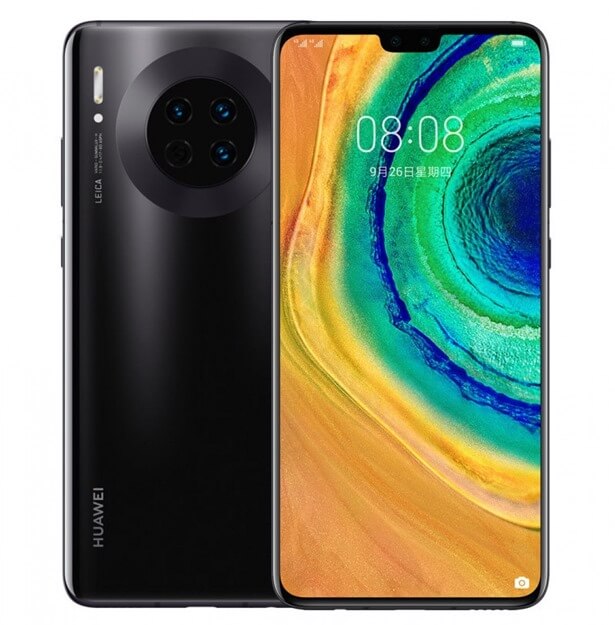 Первый, но не единственный представитель смартфонов Huawei в топовой десятке рейтинга фотокамер смартфонов DxOMark. У него OLED дисплей в 6,53 дюйма, батарея в 4500 мАч и чипсет по последнему слову науки и техники – Kirin 990.
Первый, но не единственный представитель смартфонов Huawei в топовой десятке рейтинга фотокамер смартфонов DxOMark. У него OLED дисплей в 6,53 дюйма, батарея в 4500 мАч и чипсет по последнему слову науки и техники – Kirin 990.
На бумаге «начинка» основной камеры с оптикой от Leica точно такая же, как и у прошлогодней модели – тот же сенсор в 40 МП. Увы, Huawei Mate 30 Pro лишился телеобъектива с увеличением в пять раз; вместо него в смартфоне находится модуль с трехкратным увеличением, очень похожий на тот, что находится в «не-про» версии P30.
Однако этот промах компенсирован новейшей широкоугольной камерой: хотя она всего 18 мм, однако у нее широченный сенсор 1/1.54 дюйма, F1,8 и необычное соотношение сторон – 3:2.
Добавим, что на службу камере поставлены и вычислительные мощности смартфона. Новый мощный чипсет позволил внедрить алгоритм Al-RAW, который обрабатывает поступившую от сенсоров камеры информацию и преобразует их в картинку с меньшим количеством шумов и большим уровнем детализации.
3. Honor 20 Pro
Средняя цена — 59 990 рублей.Характеристики:
- смартфон с Android 9.0
- поддержка двух SIM-карт
- экран 6.26″, разрешение 2340×1080
- четыре камеры 48 МП/16 МП/8 МП/2 МП, автофокус
- память 256 Гб, без слота для карт памяти
- 3G, 4G LTE, Wi-Fi, Bluetooth, NFC, GPS, ГЛОНАСС
- объем оперативной памяти 8 Гб
- аккумулятор 4000 мА⋅ч
- вес 182 г, ШxВxТ 73.97×154.60×8.44 мм
Honor 20 Pro может похвастаться такими же впечатляющими характеристиками камеры, как и у Huawei P30 Pro (что неудивительно, поскольку Honor — это молодежный суббренд Huawei).
На задней части смартфона находится система из четырех камер Leica:
- основная камера с разрешением 48 МП имеет максимальную чувствительность ISO 204800 и диафрагму f / 1,4 — самую большую из всех камерофонов на сегодняшний день. Это позволяет делать качественные снимки даже в условиях очень низкой освещенности
- 8 МП телеобъектив, который помогает обеспечить 3-кратный оптический зум. Вы также можете увеличить изображение до 10x с помощью гибридного увеличения. Как основная камера, так и телеобъектив имеют 4-осевую оптическую стабилизацию изображения, что в сочетании с невероятно высокой чувствительностью датчика должно помочь устранить любые размытия при дрожании камеры, даже в очень темном освещении.
- Сверхширокоугольная камера 16 МП с огромным полем обзора в 117 градусов.
- 2 МП макро-камера.
У Honor 20 Pro 6,26-дюймовый экран с разрешением 1080×2340 (412ppi) и настолько тонкими рамками, что соотношение экрана к «телу» составляет 91,7%.
В верхнем левом углу экрана находится 32 МП селфи-камера.
Как и другие флагманские модели смартфонов 2019 года от Honor и HUAWEI, модель 20 Pro оснащена процессором HiSilicon Kirin 980, графическим процессором Mali-G76 MP10 и 8 Гб ОЗУ. Этого трио более чем достаточно для самых сложных задач, которые вы поставите перед своим смартфоном.
Плюсы: дизайн с эффектом многомерной динамической голографии, емкая батарея, есть быстрая зарядка, заряжающая смартфон за полчаса до 50%.
Минусы: нет времяпролетной камеры, как HUAWEI P30 Pro, нет слота MicroSD, нет 3.5 мм разъема для наушников, нет влаго- и пылезащиты.
Conclusion
The Honor 20 Pro makes it very close to the top of our DxOMark Mobile ranking, thanks to good Photo and Video performances across the board and no significant areas of weakness. Its zoom performance is topped only by the current number one device, the Huawei P30 Pro; and the 20 Pro’s ultra-wide-angle and macro camera, while not currently covered by our test protocol, should provide added value to many mobile photographers. If you’re in the market for a new smartphone with excellent imaging capabilities, the Honor 20 Pro should be very high up on your list of options, especially if you want to save a little bit of cash compared to the more established competition.
Photo pros
- Noise well under control
- Fast, accurate, and repeatable autofocus
- Good dynamic range in most conditions
- Good detail in close- and medium-range zoom shots
- Decent detail and little light fall-off in flash shots
- Good subject isolation and nice shape to bokeh
Video pros
- Efficient stabilization
- Good detail in bright light and indoor scenes
- Fast and accurate autofocus
- Bright and vivid colors
Photo cons
- Soft image edges
- Lack of fine detail, especially in bright light
- White balance casts can be noticeable in some conditions
- Occasional unnatural color rendering
Video cons
- Occasional blue cast in outdoor videos
- Visible noise in indoor and low-light conditions
- Loss of detail in low light
- Limited dynamic range
OnePlus 8 Pro camera review (originally published April 14, 2020)
Launched in April 2020, the OnePlus 8 Pro is the latest top-end smartphone from Chinese manufacturer OnePlus. Its large 6.7-inch “fluid” AMOLED QHD display, aluminum frame and gorilla glass build, and super-fast Snapdragon 865 chipset place it squarely among top-tier devices for 2020. Challenging Samsung, Apple, and Huawei for flagship market share, OnePlus hasn’t compromised on cameras, either, with standard wide, ultra-wide, and telephoto lenses, as well as the addition of an unusual near-infrared sensor that OnePlus refers to as a “color filter camera.”
The configuration of the primary and tele-cameras is broadly similar to last year’s OnePlus 7 Pro, but OnePlus has overhauled the ultra-wide camera on the 8 Pro. Featuring a new 48MP Quad-Bayer sensor (12MP output), its new ultra-wide shooter also comes equipped with a slightly wider 14mm f/2.2-aperture lens with upgraded PDAF autofocus.
The primary camera remains a 48MP sensor with pixel-binning down to 12MP. The OnePlus 8 Pro’s primary sensor is physically larger at 1/1.43-inch compared to the OnePlus 7 Pro, however. The 25mm-equivalent f/1.8-aperture lens comes with omnidirectional PDAF and laser autofocus as well as optical image stabilization (OIS).
On paper, the OnePlus 8 Pro’s tele-camera looks identical to its predecessor, with an 8MP-resolution sensor and 3x optical zoom lens, and boasting a f/2.4-aperture lens, PDAF autofocus, and OIS. Finally, the new color filter camera offers a 5MP resolution and f/2.4-aperture lens for simulated infrared or color filter effects. Our testing protocol doesn’t address image quality from this type of camera, however, so its performance doesn’t have any impact on the OnePlus 8 Pro’s DXOMARK Camera score.
For video, the OnePlus 8 Pro shoots 4K footage at either 60 or 30 frames per second, with an additional 240fps mode for super slow-mo capture when you drop the resolution to 1080p. Video features also include Auto HDR for improved dynamic range in high-contrast lighting, and gyroscope-enabled electronic image stabilization (gyro-EIS) to correct unwanted motion effects in your video files.
Key camera specifications:
- Primary: 48MP 1/1.43-inch Quad-Bayer sensor (12MP output), 25mm-equivalent f/1.8-aperture lens with omnidirectional PDAF/Laser AF and OIS
- Telephoto: 8MP sensor with 1.0µm pixels, f/2.4 3x optical zoom lens with PDAF and OIS
- Ultra-wide: 48MP 1/2.0-inch sensor with 0.8µm pixels, 14mm-equivalent f/2.2-aperture lens with PDAF
- Color filter camera: 5MP sensor with f/2.4-aperture lens
- Dual-LED flash
- Video: 4K 2160p/60fps (2160p/30fps tested)
About DXOMARK Camera tests: For scoring and analysis in our smartphone camera reviews, DXOMARK engineers capture and evaluate over 1600 test images and more than 2 hours of video both in controlled lab environments and in natural indoor and outdoor scenes, using the camera’s default settings. This article is designed to highlight the most important results of our testing. For more information about the DXOMARK Camera test protocol, click here. More details on how we score smartphone cameras are available here.
